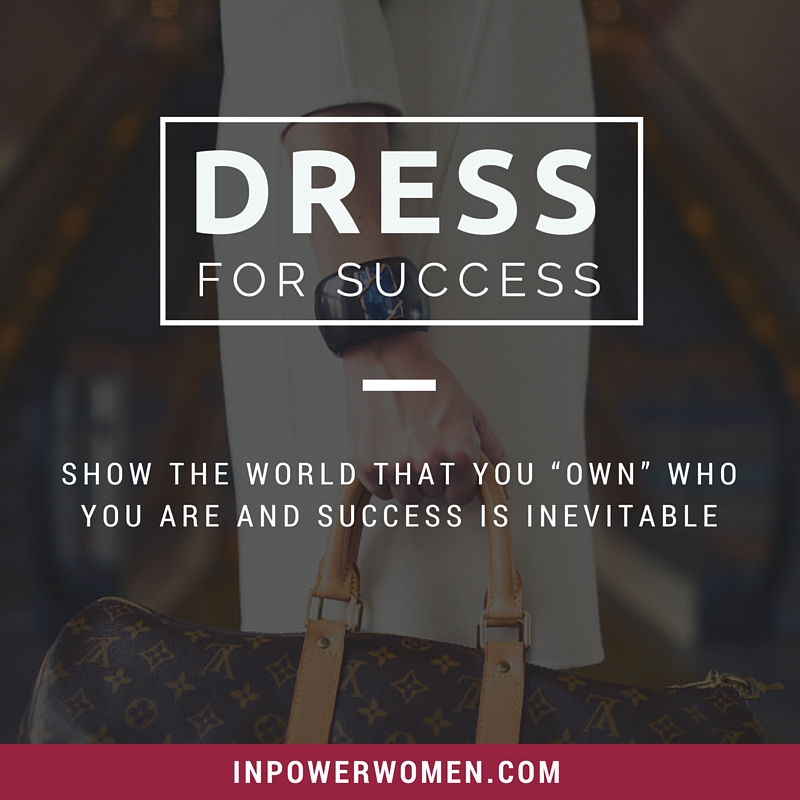- The “dress for success” concept has evolved to be about using appearance as a tool for authentic self-expression, not conformity.
- True power for women stems from inner resources like mindfulness and emotional intelligence, not just external appearance.
- Authentic leadership cultivates both inner and outer power; how you present yourself should reflect your genuine self and confidence.
- Cultural icons like Barbie, even in modern portrayals, can perpetuate narrow beauty standards that impact women’s self-perception and professional confidence.
- Developing an “authentic presence” involves aligning your inner sense of self with your outward expression, resisting external pressures and owning your unique power inside and out.
Key Takeaways
From “Dress for Success” Skepticism to an INpowered View
“You’re going to write a women’s blog? You mean more ‘dress for success’ stuff?”
Gah! No! That was my reaction years ago. I wanted to move beyond surface-level tips. We named it INpower Women to emphasize an inside-out perspective. This focus felt crucial because genuine power often starts internally for women who weren’t necessarily raised feeling powerful.
Developing inner resources like mindfulness, emotional intelligence, and clarity on personal values builds resilience. This inner strength helps women navigate the challenges of achieving and managing external power (InPower Coaching). When you have inner power, you’re better equipped to survive success in demanding roles.
Initially, “dress for success” felt like the antithesis of inner power. Doesn’t relying on clothes suggest a lack of confidence underneath? It sets up an “either/or” dynamic: you have inner power or you focus on outward appearance.
Embracing the “Both/And”: Appearance as Authentic Expression
An INpowered mindset embraces “both/and.” Coaching hundreds of professional women has shown me that impactful leaders, regardless of gender, integrate both inner and outer power. They consciously craft a leadership identity that feels authentic and communicate that authenticity effectively to others. This includes how they dress and present themselves.
The key is to “own it.” When your external presentation—your clothing, style, overall presence—aligns with and expresses your authentic self, it signals self-awareness and confidence. It’s not about conforming to a dictated standard, but about using appearance as another tool to communicate who you are and the power you hold.
Putting on clothes that reflect your genuine self shows the world you own who you are, including how you look. It completes the picture of wholeness you present.
Battling Barbie: Old Ghosts and New Critiques
I admit, my own relationship with fashion and style is complicated. Like many women, I grew up with the impossibly thin, blond Barbie as the visual shorthand for female success. My mother often measured success, hers and mine, by thinness and conventional beauty. Unsurprisingly, my earliest vision of a successful woman looked a lot like Barbie – and not the more diverse versions Mattel later introduced (CNN, 2016).
To this day, I wrestle with the fact that the woman in my mirror doesn’t match that ingrained ideal. Real women juggling careers, families, and ambitions often look more like me than like the original Barbie. Women in the public eye, particularly in business and politics, are slowly forging new visuals for feminine leadership, but the fashion industry largely remains part of the double bind women face.
Then came the Barbie movie. I found it insightful and sharp in its critique of patriarchy and its exploration of feminist themes. It opened important conversations. However, I found it less helpful regarding body image. While celebrating imperfection and challenging some stereotypes, the film’s portrayal of “different” Barbies still largely featured conventionally thin, healthy-looking actors (Jessica DeFino Substack, 2023).
The Missed Opportunity on Body Diversity
The movie touched on body image issues, like the infamous cellulite scene, but often framed these “imperfections” as problems to be overcome rather than natural variations (Jessica DeFino Substack, 2023). While aiming for diversity, the representation felt surface-level. The main characters grappling with being “not perfect” didn’t showcase a true range of body types seen in the real world (One Woman Project, 2024).
This matters because media representation significantly impacts professional women. Constantly seeing narrow, often unrealistic, body ideals reinforced, even in supposedly progressive films, affects self-perception and confidence (PMC, 2024). It subtly reinforces the idea that a woman’s value and competence are still tied to meeting specific appearance standards, a bias that persists in many workplaces (Tara Rivera).
While the Barbie movie initiated valuable feminist discussions, its limitations on body diversity highlight how deeply ingrained these narrow ideals are. It didn’t fully dispel the image of Barbie as a physically unattainable figure, reminding us that even well-intentioned media can fall short.
Cultivating Authentic Presence Beyond the Mold
The challenge of dressing to visualize our inner power, especially when battling ingrained ideals like the Barbie myth, is part of the journey of claiming that power. True leadership presence isn’t about conforming to an external mold, whether it’s a classic “power suit” or a specific body type. It’s about aligning your inner sense of self with your outward expression.
How do you want to show up? What visual choices make you feel most authentically powerful and aligned with your values? Answering these questions allows you to use appearance strategically, not as a mask, but as a genuine reflection of your inner strength. This requires self-awareness and the courage to resist pressures, even subtle ones from popular culture.
Authentic self-presentation is crucial for women leaders navigating complex expectations (Frontiers in Psychology, 2015). When your external choices resonate with your internal compass, you project confidence and credibility that transcends fleeting trends or unrealistic ideals.
Conclusion: Own Your Power, Inside and Out
The conversation around “dress for success” has evolved. It’s not about adopting a uniform, but about consciously choosing how to present ourselves in a way that reflects our authentic inner power. While external appearance alone doesn’t grant power, it is a vital component of how we communicate our leadership presence to the world.
The Barbie movie served as a potent reminder of both progress and persistent challenges. It celebrated female agency while simultaneously falling short on fully challenging narrow beauty standards. This complexity underscores the need for women leaders to cultivate a strong inner sense of self, enabling them to make conscious, authentic choices about their external presentation, resisting unrealistic pressures. Ultimately, true power comes from within, but expressing it effectively involves owning all aspects of who you are – inside and out.
If you’re looking to strengthen your inner power and develop an authentic leadership presence that aligns with your values, explore InPower Coaching’s executive coaching services. Let’s work together to help you own your unique power and achieve your highest potential.
References
- CNN. (2016, January 28). Barbie’s new body: Curvy, tall, and petite.
- DeFino, Jessica. (2023, July 21). Did the Barbie Movie Kill Beauty Standards or Give Them a Makeover?
- Frontiers in Psychology. (2015). Authentic leadership: Is it more than emotional intelligence?
- InPower Coaching. What is Personal Power?
- One Woman Project. (2024, February 15). Barbie (2023) Review: Not An Intersectional Feminist’s Dreamhouse.
- PMC (PubMed Central). (2024). Influence of Social Media on Women’s Body Image Perceptions and Mental Health.
- Rivera, Tara. Is Your Body Image Affecting Your Career Growth?
Guide to Women in Leadership
Organizations with women in their executive suites regularly out-perform others. Yet rising female executives (and their mentors) are frustrated at how hard it is to break through the glass ceiling. In this extensive guide, Executive Coach Dana Theus shares her tried and true strategies to help women excel into higher levels of leadership and achieve their executive potential.







